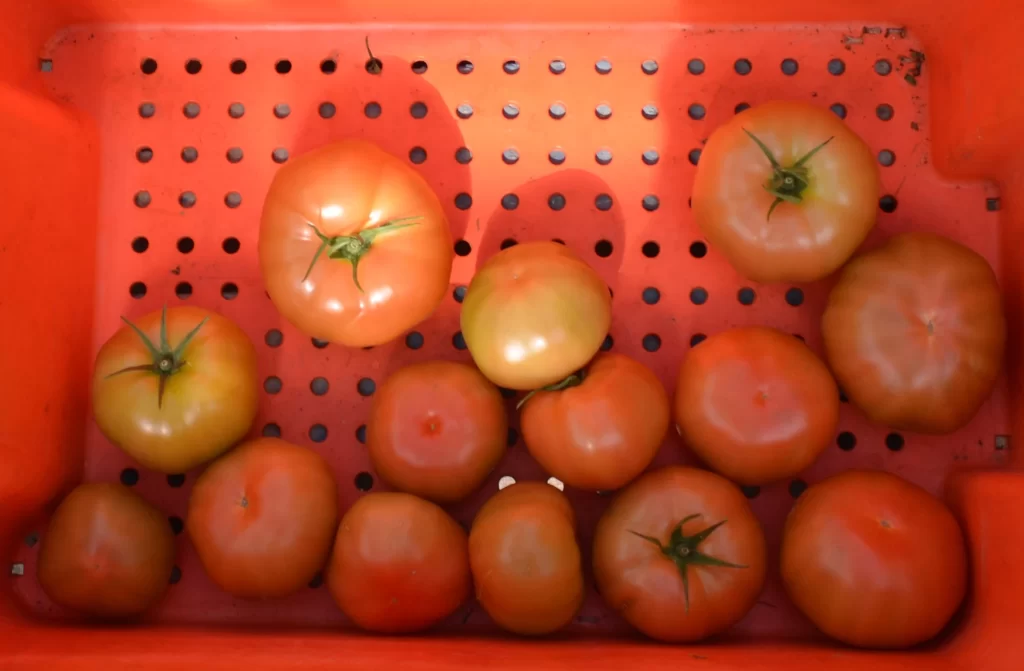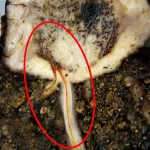Tackling ToBRFV in hydronic systems
Most tomato growers have become very familiar with the Tomato Brown Rugose Fruit Virus (ToBRFV). A few months ago, we published a blog post about the damage the virus is causing worldwide. Between then and now, we developed a qPCR test called Pathogen Mini to help detect the virus in the water of hydroponic systems. Pathogen Mini can detect ToBRFV in the leachate, making detection of the virus on the farm much more efficient. This post explains what the service entails and how testing works.
Benefits of Leachate Testing
Leachate testing allows for sampling to be quicker. In traditional ToBRFV sample collection, growers must collect approximately 200 tissue samples for best practice [1]. However, with leachate testing, growers can gather fewer samples to ensure the entire farm is sub-sampled.
Leachate can be a tool for early detection of infected plants before symptoms arise. With samples taken after the onset of symptoms, more virus has already spread and proliferated compared to samples taken before any noticeable symptoms (e.g. surveillance). Below is a comparison of tissue and leachate testing and the amount of time the virus can spread undetected in tomato crops. The plant can show symptoms anywhere from 10 to 30 days after the virus incubation period [2]. During this period, growers can send samples for confirmation of the virus (Figure 1); this gives the virus 27 days to spread through the farm undetected. With regular monitoring, growers can detect the virus before symptoms show, which means that the virus can spread through the farm for seven days undetected, compared to 27 days (Figure 2).
Figure 1. The timeline of testing ToBRFV in tissues shows a potential 27-day period of the virus spreading undetected through the farm.
Figure 2. The timeline of testing ToBRFV in leachate shows a potential 7-day period of the virus spreading undetected through the farm.
Technology Behind Pathogen Mini
Pathogen Mini is qPCR-based, a method used to detect microbial agents to ensure food safety since 1985 [3]. Pathogen Mini has a quicker turnaround time than Pathogen+, with results in 2-5 days. The Pathogen Mini service is currently available to detect ToBRFV, and multiple test quantities are offered in surveillance packages.
Frequency of Testing
We recommend that growers use the Pathogen Mini platform to prevent outbreaks rather than dealing with a disease after it has infected the plants. We suggest four tests every two weeks, with larger greenhouses testing at a higher frequency to ensure complete greenhouse coverage. The testing schedule is customizable to each farm and considers variables such as size, location, the pathogen of concern, and budget. We aim to work with you to create the best approach to suit your needs!
Figure 3. A tomato fruit with symptoms of ToBRFV.
ToBRFV Testing at Healthy Hydroponics
Pathogen Mini can process samples in the form of leachate or leaf tissue. We are currently offering Pathogen Mini as a subscription or one-time service. Our services help growers test their crops routinely; to detect diseases before symptoms are seen on their crops. For more pricing information, please refer to the Services page on our website.
Please be sure to visit our Sampling Submission page for specific instructions, and if you have any questions, please don’t hesitate to contact us at [email protected].
References
[1] Maksimovic, O. (2022, Aug 15) Slovenia: talk to them they do detection in water. Tomato Brown Rugose Fruit Virus Symposium.
[2] Panno, S., Caruso, A., Davino, S. (2019) First report of Tomato brown rugose fruit virus on tomato crops in Italy. Plant Disease 103(6):1439. https://doi.org/10.1094/PDIS-12-18-2254-PDN
[3] Kralik P and Ricchi M (2017) A Basic Guide to Real Time PCR in Microbial Diagnostics: Definitions, Parameters, and Everything. Front. Microbiol. 8:108. doi:10.3389/fmicb.2017.00108
Looking for more useful info? Go back to the Blog Page or checkout the Resources Page.
![]()
Tanya Irani is a Bioinformatician and Agriscience Advisor at Healthy Hydroponics





